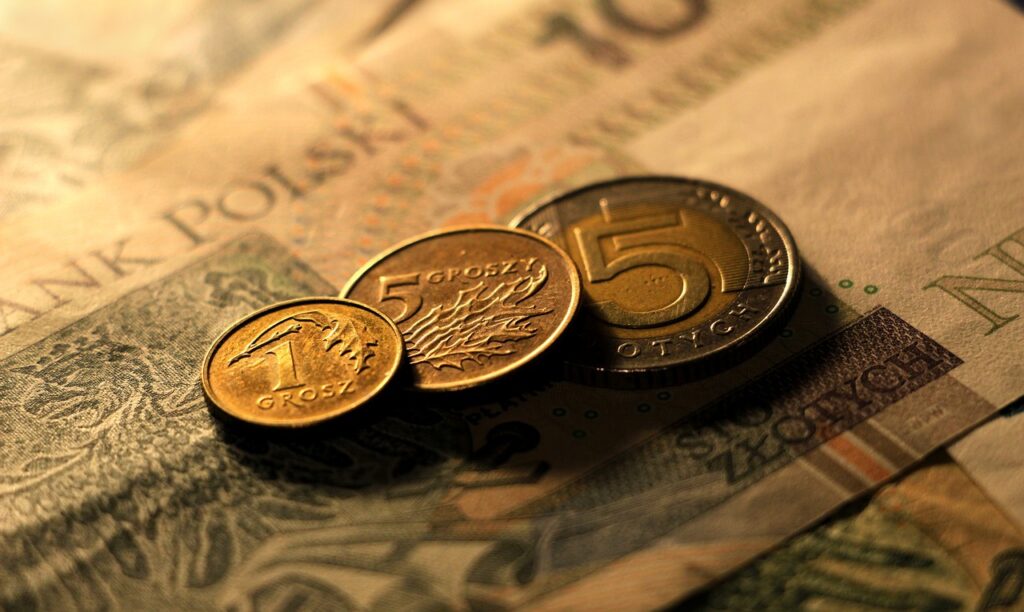This article explores the factors driving gold prices to record highs, including geopolitical tensions, global monetary policy easing, and uncertainty surrounding the U.S. election, while analyzing gold’s investment value in a complex market environment.
The Relationship Between the Global Economy and the Gold Market
Gold, as a safe-haven asset for global investors, has long played a crucial role during times of increasing market uncertainty. Recently, gold prices have reached new record highs, surpassing $2,700 per ounce, driven by multiple favorable factors. Geopolitical tensions, ongoing expectations of global monetary policy easing, and uncertainty surrounding the U.S. presidential election have made gold the preferred safe-haven choice for investors.
The fluctuations in the gold market are not the result of a single event but rather the product of several economic and political factors. When analyzing the gold market, it is essential to consider multiple dimensions, including geopolitical issues, monetary policy, economic data, and market sentiment.

Geopolitical Tensions and Gold’s Safe-Haven Appeal
In 2024, geopolitical tensions have escalated globally, particularly in the Middle East, which has significantly impacted global financial markets. The recent intensification of the conflict between Israel and Hezbollah has heightened market anxiety. As tensions escalate, global investors are seeking safe-haven assets, and gold has become the most reliable option.
The instability in the Middle East has long influenced financial markets. With Hezbollah increasing its military involvement, the region’s political situation has become more complex, raising market risks. Historically, war, conflict, and political turmoil have triggered strong demand for gold as a safe-haven asset. The ongoing escalation of conflict in the Middle East has darkened market expectations, prompting a significant flow of capital into gold, driving up prices.
In addition to the Middle East, geopolitical issues in other regions, such as the energy crisis in Europe and territorial disputes in the Asia-Pacific, have also led investors to turn to gold. Increasing gold allocations in investment portfolios has become an effective strategy for mitigating global uncertainty.
The Impact of Monetary Policy Easing on Gold Prices
The direction of monetary policy in major economies is another key factor driving gold prices. The U.S. Federal Reserve’s monetary policy remains dovish in 2024, and the market widely expects another interest rate cut in November. This trend has provided significant support to the gold market. Typically, rate cuts weaken the U.S. dollar, making assets like gold, which are priced in dollars, more affordable, thus boosting demand for gold.
In addition to the U.S., the European Central Bank (ECB) has also contributed to the rise in global gold prices by cutting interest rates by 25 basis points in mid-October. The market reacted swiftly, further increasing expectations for a U.S. Federal Reserve rate cut. Currently, the market estimates a 92% probability that the Fed will cut rates by 25 basis points in its upcoming policy meeting.
Easing monetary policies often create low-interest-rate environments, which are favorable for gold. Since gold does not yield interest or dividends, the opportunity cost of holding gold decreases in low-interest-rate environments, making it more attractive to investors seeking to hedge economic risks. Additionally, low rates and global monetary easing have fueled inflation expectations, further increasing demand for gold as an inflation hedge.

The Impact of U.S. Economic Data and Election Uncertainty on Gold
Beyond geopolitical and monetary policy concerns, the U.S. economy and its political landscape have also significantly affected the gold market. In 2024, U.S. economic data has been mixed, with some indicators suggesting slowing growth, especially in the manufacturing and consumer sectors. Although employment data remains strong, the overall economic outlook remains unclear, raising investor doubts about the future.
The upcoming U.S. presidential election is another major point of concern for the markets. The race between the Democratic and Republican candidates remains close, and uncertainty about the election outcome and its impact on economic policy is growing. The election results, including potential shifts in tax policies, fiscal stimulus, and trade strategies, could have profound effects on the market. This uncertainty has further increased market volatility, prompting investors to allocate more capital to gold to hedge against political risk.
Historically, major elections have often caused short-term market volatility, and gold tends to perform particularly well during these periods. As a globally recognized safe-haven asset, gold can offer stable returns during times of political uncertainty, allowing investors to safeguard their assets in turbulent markets.

Historical Trends and Gold’s Long-Term Performance
Looking back at history, gold has consistently performed well during periods of global economic and political upheaval. From the 2008 global financial crisis to the 2020 COVID-19 pandemic, gold prices have repeatedly reached new highs during times of crisis. As a traditional safe-haven asset, gold is often the first choice for investors seeking to mitigate risks during times of market turmoil, economic uncertainty, and rising inflation expectations.
In the long term, gold is not only a tool for protecting against economic and political risks but also an essential component of a diversified investment portfolio. Whether for asset preservation or risk hedging, gold has shown unique advantages. Although gold prices fluctuate with market sentiment, its role as a globally recognized safe-haven asset has remained steadfast over time.
Comparing Gold to Other Safe-Haven Assets
Although gold is a traditional safe-haven asset, it is not the only option. In a complex market environment, investors may also turn to other safe-haven assets, such as government bonds, the U.S. dollar, the Swiss franc, and the Japanese yen. These assets also provide safe-haven functions under certain market conditions, but compared to gold, they are often influenced by monetary policy or national credit risk.
Unlike government bonds, gold is not dependent on any country’s credit rating and is not directly affected by interest rate policies. This gives gold a unique advantage in global markets, particularly during times of monetary easing and geopolitical tension. Gold has consistently performed well across different market environments. Compared to other currencies, gold’s global liquidity and value-preserving capabilities have made it a preferred choice among international investors.

Future Outlook: Investment Opportunities and Risks in Gold
Looking ahead, gold prices will continue to be influenced by various factors. Geopolitical risks, changes in monetary policy, slowing global economic growth, and inflation expectations could all support ongoing demand for gold. However, investors should remain cautious when increasing gold holdings, as the market is highly volatile, and short-term changes may introduce unforeseen risks.
Additionally, advancements in technology and the rise of digital currencies may impact the gold market. As digital currencies and blockchain technology continue to gain traction, some investment capital may shift towards these emerging assets, posing a challenge to gold’s market position. However, considering gold’s long-standing history and its unique value as a physical asset, it is expected to continue playing a significant role in global investment portfolios.
In the current environment of increasing global uncertainty, gold’s role as a safe-haven asset has once again come to the forefront. Geopolitical risks, monetary policy easing, and U.S. election uncertainty have combined to drive the continued rise in gold prices. While the gold market may experience volatility, its long-term position as a global safe-haven asset remains strong. Investors should carefully consider global economic and political conditions and wisely allocate gold in their portfolios to hedge risks and preserve assets.
FAQ
- Why have gold prices reached record highs recently?
Gold prices have risen due to escalating geopolitical tensions, expectations of global monetary policy easing, and uncertainty surrounding the U.S. presidential election. - How does monetary easing impact gold prices?
Easing monetary policies often result in lower interest rates and rising inflation expectations, reducing the opportunity cost of holding gold and boosting demand. - What effect does U.S. election uncertainty have on the gold market?
Uncertainty about the election outcome increases market volatility, leading investors to increase gold allocations as a hedge against political risks. - What are the advantages of gold compared to other safe-haven assets?
Gold, unlike government bonds, is not dependent on any country’s credit rating and offers global liquidity and value preservation advantages. - What are the risks to the gold market in the future?
Gold could face challenges from technological advancements, such as digital currencies, and its price could fluctuate due to short-term market volatility. - Is gold a good long-term investment?
Gold has proven to be a stable asset over the long term, particularly during periods of global uncertainty, making it a valuable tool for hedging risks and preserving wealth.
